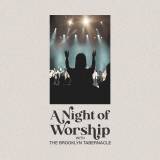Falsetto and Countertenors

In the past 20 years there has been an increase of male singers in popular music who use falsetto to sing their songs. Indeed, some artists have based their whole careers on singing falsetto.
As a result, many young
men today try to imitate them and confuse their singing falsetto with
countertenoring. Though both techniques allow you to reach the same high notes,
they are extremely different in a physical level, and are utilized by different
voice types.
Believe it or not, most
people who utilize falsetto because they can’t reach high notes in their full
voice, are not countertenors, not even tenors, but actually baritones. Read on
to learn more about it.
As a quick side note at
this point, I want to note that women, too, can sing in a less developed
falsetto, but most of the time they don’t have a use for it. The only tradition
that utilizes female falsetto is classical Indian singing.
1. Falsetto Definition
Falsetto is a type of
pseudo-voice, or false voice (therefore false-tto), which results when a man
tries to imitate a female voice or sing notes that are higher than his normal
range.
Falsetto is not a
legitimate, higher version of the male voice, but instead it’s a fake,
artificial, and disembodied sound that started and was encouraged in the sacred
music tradition because women were not allowed to participate in choirs.
Though up to the 16th
century little boys would sing the soprano parts, the Baroque fashion with its
intricate and flamboyant designs had a toll in music as well. Melodic lines
became too hard for boys to sing and therefore falsettists were called in to
take on their place.
Falsettist is somebody
who utilizes, usually, only falsetto in his singing. So again, Adam Levine and
Chris Martin are falsettists, not countertenors.
In the classical
tradition, falsettists can, also, be known as male altos, but I personally feel
that this characterization is not appropriate as a female alto sings in full
voice, whereas a male alto doesn’t.
Male singers usually
switch to falsetto between a C4 and an E4.
2. How Does Falsetto Work?
In normal, full singing,
your entire vocal folds vibrate, with the elastic mucous membrane billowing as
air passes through, and opening and closing with each vibration. If you’re not
squeamish, take a look at this high speed Youtube video of vocal folds
vibrating.
In falsetto singing,
however, the vocal folds stay open all throughout the sound production and only
their edges vibrate as air is blasted through them.
Though it might seem that
falsetto is easier to sing because you need less air to produce sound than with
full voice singing, it’s actually more strenuous and fatigue can come about
really fast.
The reason for this is
because although you need less air to make the edges of your vocal folds
vibrate, you need to push that air out really fast in order to overcome the
stretched vocal fold resistance.
Think of it as trying to
make an overstretched guitar chord produce sound. You have to put some effort
when striking it. It’s the same thing with falsetto; you have to utilize your
diaphragm and tense your abdominal muscles in order to blast out air.
Knowing that it’s only
the edges of the vocal folds that vibrate during falsetto singing, it’s also a
very good indication of why falsetto sound is so light and lacking in timbre.
The warmth and depth of a singing voice is directly correlated to the amount of
harmonics that a sound has.
 Harmonics
are, basically, secondary multiple frequencies of the primary frequency
the air vibrates at when we produce sound. So, if the air vibrates at
261.6 Hz when you sing the middle C, the second harmonic vibrates at
523.2 Hz, the third harmonic vibrates at 784.8 Hz, etc. The more the
harmonics you produce, the more full that note sounds.
Harmonics
are, basically, secondary multiple frequencies of the primary frequency
the air vibrates at when we produce sound. So, if the air vibrates at
261.6 Hz when you sing the middle C, the second harmonic vibrates at
523.2 Hz, the third harmonic vibrates at 784.8 Hz, etc. The more the
harmonics you produce, the more full that note sounds.
Since it’s only the edges
of the vocal folds that vibrate when singing falsetto, it’s natural that the
sound lacks in harmonics, and thus the notes sound light and disembodied.
Falsetto and Countertenors
 Reviewed by Admin
on
5:30:00 PM
Rating:
Reviewed by Admin
on
5:30:00 PM
Rating:
 Reviewed by Admin
on
5:30:00 PM
Rating:
Reviewed by Admin
on
5:30:00 PM
Rating:
















Post a Comment